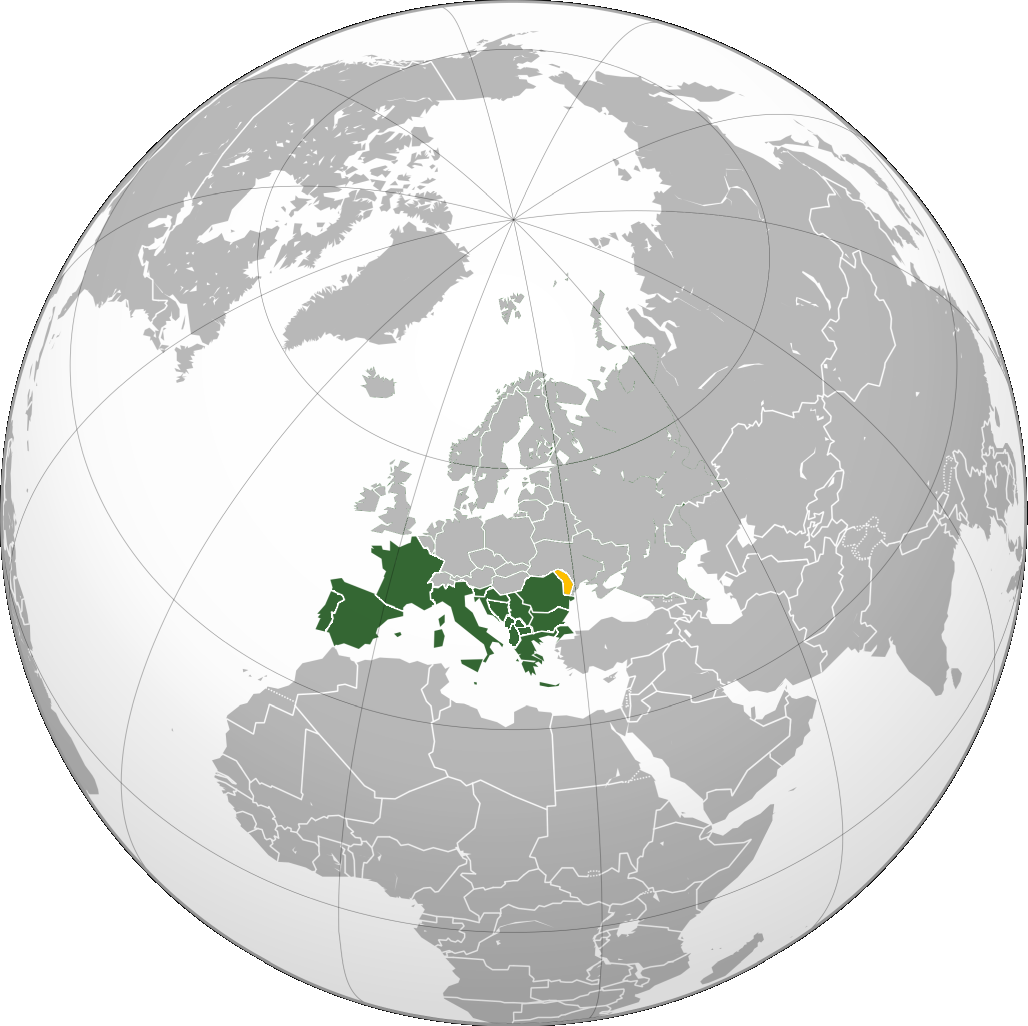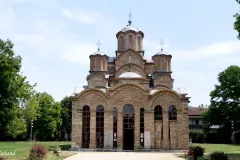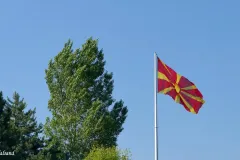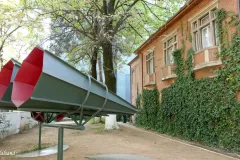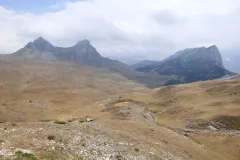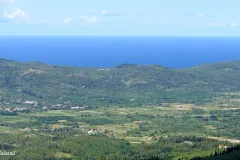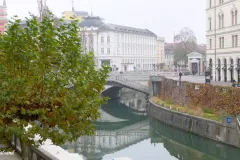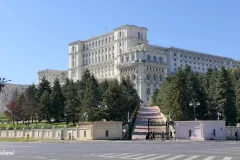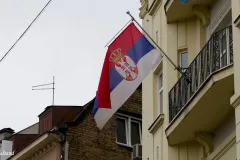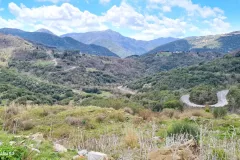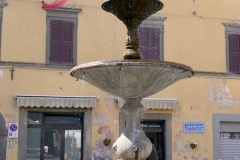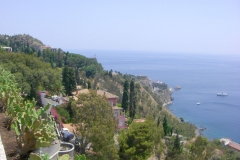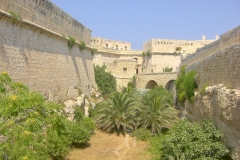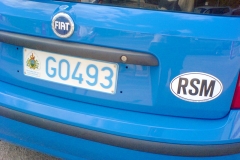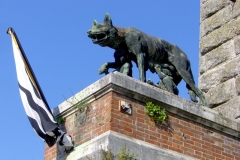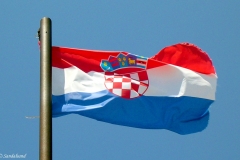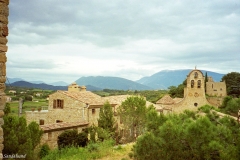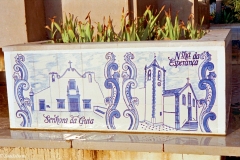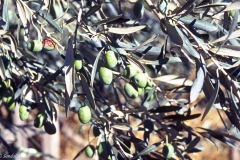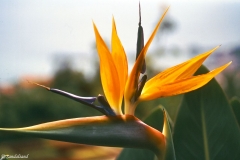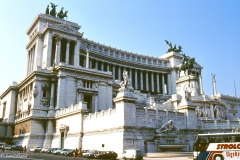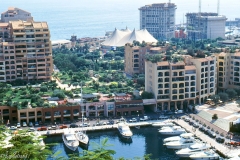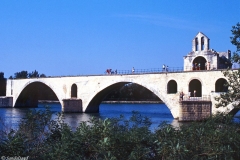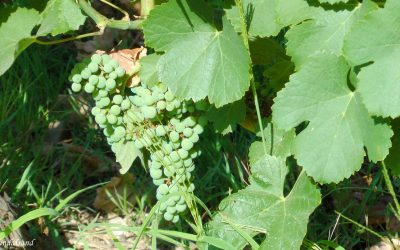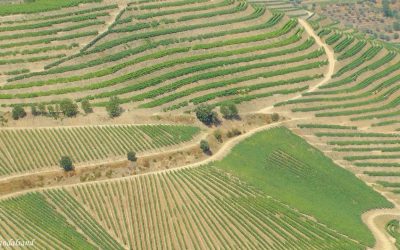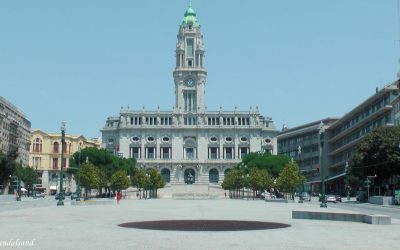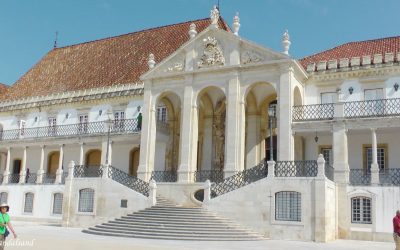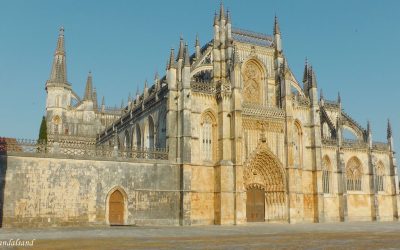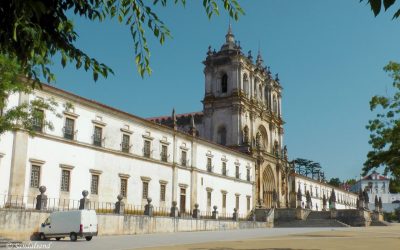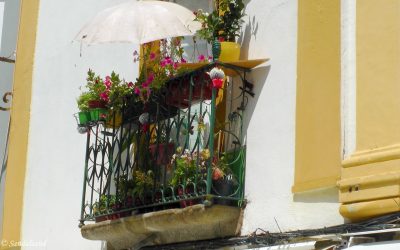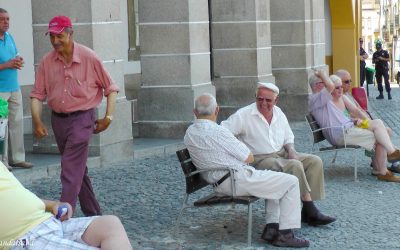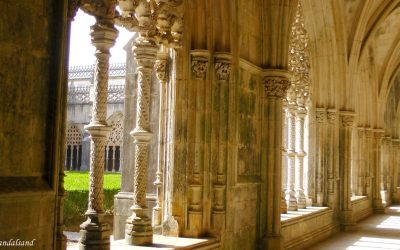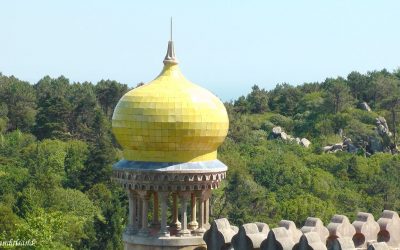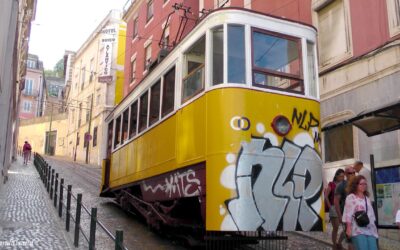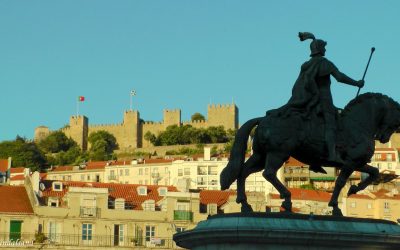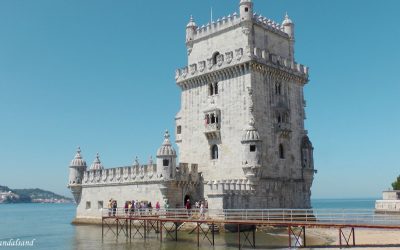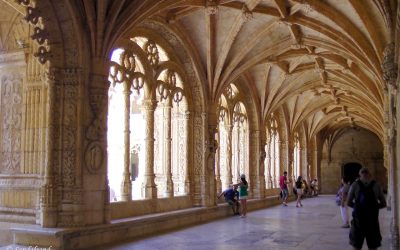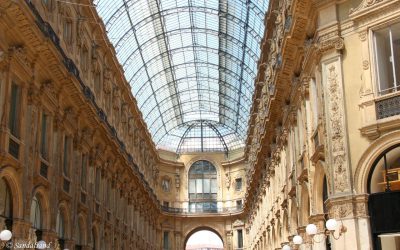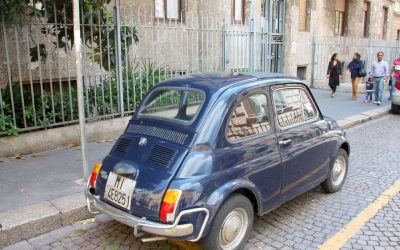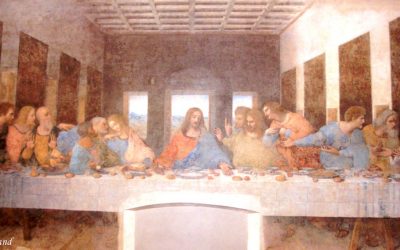Intro
Countries
Photos
Blog
Facts
Overall impressions
We were astonished and very tempted to buy whatever we could. Unfortunately, our means of transportation rendered that temptation unfeasible.
Italy is in itself one giant antiquity market, in my view. The country had its two historic heydays during the Roman Empire and the Renaissance, a millennium apart. In between those periods and ever since, the country has dwindled into not much more than showing off the remains of its past. Tourists flock in to admire the Coliseum and the Sistine Chapel, the two most known buildings of those two eras.
Sad to say that goes for much of the rest of Southern Europe as well. I am quite pessimistic for the future of this large and varied region (and for the rest of Europe as well). It seems to be splitting apart once more, promoting self-interests and losing in the global competition like the rest of the old world. On the other hand, I find this famous quote quite illustrative in an amusing yet informative way.
In Italy, for 30 years under the Borgias, they had warfare, terror, murder and bloodshed, but they produced Michelangelo, Leonardo da Vinci and the Renaissance. In Switzerland they had brotherly love, they had 500 years of democracy and peace – and what did that produce? The cuckoo clock.” (Orson Welles)
Countries
Albania | Andorra | Bosnia and Herzegovina | Bulgaria | Croatia | France | Greece | Italy | Kosovo | Malta | Moldova | Monaco | Montenegro | North Macedonia | Portugal | San Marino | Romania | Serbia | Slovenia | Spain | Vatican (Holy See)
I have made it to 19 independent countries out of 21. Click the links above to view all articles from a particular country.
My definition of Southern Europe are the countries adjacent to the Mediterranean Sea and on the west coast of the Black Sea. Give or take a few for practical purposes. Portugal borders for instance the Atlantic. Cyprus is politically and culturally also part of this region, but I have chosen to group it where it belongs geographically, as part of what I have called the Middle East and Africa.
Kosovo is not universally accepted as an autonomous country, and has not been allowed membership of the United Nations. The Vatican is recognised by other countries, but it has preferred to stay outside the UN.
This is a map of the region and Sandalsand’s visited and non-visited countries.
Photo galleries
Open the box to view a multitude of picture galleries from Sandalsand’s travels in this region.
Click to show or hide
For the best experience, open a picture gallery in a new tab or window.
Posts from Southern Europe
Pictures from Portugal
This is a collection of pictures from Portugal, the result of trips to different parts of the country over several years. If you look up my articles...
VIDEO – Portugal – Douro
This video from the Douro region takes you from the city of Porto upriver to the beautiful and famous terraced vineyards. "Alto Douro Wine Region"...
World Heritage #1046 – Alto Douro Wine Region
On either side of the Douro river, and in the side valleys they have been constructing terraces for centuries. The UNESCO World Heritage List...
VIDEO – Portugal – Porto
This video is from Porto, or Oporto as it used to be called in English. The city has the unmistakable atmosphere of an historically important city....
World heritage sites in central Portugal
On this fourth day of our road trip in Portugal we had planned on visiting five World Heritage Sites in central Portugal. Would that be possible?...
World Heritage #0755 – Oporto
Would you like some Port? In the cellars of Porto (or Oporto) you may taste whichever Port wine you'd like. The UNESCO World Heritage List includes...
VIDEO – Portugal – Coimbra
This video is from Coimbra, the ancient university town in central Portugal. Some scenes are from the university and some from the town centre....
VIDEO – Portugal – Mosteiro da Batalha
This is a video from the Mosteiro da Batalha in Portugal, one of the country's prominent World Heritage Sites. "The Monastery of Batalha" is no. 264...
VIDEO – Portugal – Mosteiro de Alcobaça
This is a video from the Mosteiro de Alcobaça. The church and monastery were among the first Gothic buildings in Portugal. The impression of...
VIDEO – Portugal – Evora
This video is from Évora, an important town for the Romans and later on for the Portuguese until the 18th century. After this the town turned into a...
World Heritage #0505 – Monastery of Alcobaça
The Monastery of Alcobaça is one more of Portugal's fine examples of beautiful architecture and fine masonry. The UNESCO World Heritage List...
World Heritage #0361 – Historic Centre of Évora
The historic centre of Évora, a lazy little town in the interior of Portugal hides a proud history. It is a pleasant place. The UNESCO World...
World Heritage #0264 – Monastery of Batalha
As soon as you enter the halls and cloisters of the monastery of Batalha you will discover a world of tranquillity and the crafts of great masons. ...
World Heritage #1387 – University of Coimbra
The university of Coimbra, a town in central Portugal has deep roots and a splendid view of the river below. The UNESCO World Heritage List includes...
VIDEO – Portugal – Sintra
This is a video from Sintra. There are many palaces scattered around in the area, and one will have a hard time reaching them all. Most tourists...
Lisboa (Lisbon) and Sintra
We had two days at our disposal in central Lisbon and topped it with a full day excursion to Sintra. Neither should be enjoyed in less time,...
World Heritage #0723 – Sintra
The natural landscape in Sintra to the west of Lisbon is fine, but the palaces set this area aside as unique. The UNESCO World Heritage List...
VIDEO – Portugal – Lisbon
This is a video from Lisbon, the capital of Portugal. Get an introduction to squares, districts, food and transportation what is officially called...
VIDEO – Portugal – Belém and Jerónimos
This is a video from Belém and Jerónimos, two very important and popular attractions in Lisbon. They are also World Heritage Sites. "Hieronymites...
World Heritage #0263 – Hieronymites and Tower of Belém
The monastery of the Hieronymites and the tower of Belém in Lisbon bear witness to Portugal's heroic history. The UNESCO World Heritage List...
Portugal Road Trip – Planning for perfection
This is the plan for a Portugal road trip, more specifically eight days on the road in Lisbon and the northern half of Portugal. It worked out fine...
VIDEO – Italy – Milano
Here is a video from Milano. The capital of northern Italia (Italy) is a major city when it comes to finance, fashion and football. Here are 11...
Getting to know the city of Milano
Following a successful excursion to Lake Como and Crespi d'Adda, the capital of northern Italy, Milan, was coming up. A modern city with fashion...
VIDEO – Italy – Milan – Last Supper
Here is a video from the Last Supper, the famous mural by Leonardo da Vinci. Or rather, it is about the painting and its surroundings. "The Church...
A fact sheet
This is Wikipedia’s introduction to Europe as a whole.
Map and numbers
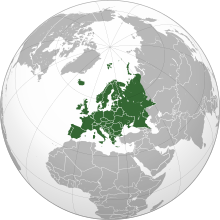
- Area: 10,180,000 km2
- Population: 741,447,158 (2016)
- Population density: 72.9/km2
- Nominal GDP: $20.2 trillion (2017)
- PPP GDP: $26.7 trillion (2017)
- Per capita GDP: $27,330 (2017)
- HDI: 0.845
- Countries: 50 sovereign states, one observer, 6 with limited recognition
- Dependencies: 6 dependencies
Geography
Europe is a continent located entirely in the Northern Hemisphere and mostly in the Eastern Hemisphere. It is bordered by the Arctic Ocean to the north, the Atlantic Ocean to the west and the Mediterranean Sea to the south. It comprises the westernmost part of Eurasia.
Since around 1850, Europe is most commonly considered as separated from Asia by the watershed divides of the Ural and Caucasus Mountains, the Ural River, the Caspian and Black Seas and the waterways of the Turkish Straits. Though the term “continent” implies physical geography, the land border is somewhat arbitrary and has moved since its first conception in classical antiquity. The division of Eurasia into two continents reflects East-West cultural, linguistic and ethnic differences, some of which vary on a spectrum rather than with a sharp dividing line. The border does not follow political boundaries, with Turkey and Russia being transcontinental countries.
Europe covers about 10,180,000 square kilometres, or 2% of the Earth’s surface (6.8% of land area). Politically, Europe is divided into about fifty sovereign states of which the Russian Federation is the largest and most populous, spanning 39% of the continent and comprising 15% of its population. Europe had a total population of about 741 million (about 11% of the world population) as of 2016. The European climate is largely affected by warm Atlantic currents that temper winters and summers on much of the continent, even at latitudes along which the climate in Asia and North America is severe. Further from the sea, seasonal differences are more noticeable than close to the coast.
History
Europe, in particular ancient Greece, was the birthplace of Western civilization. The fall of the Western Roman Empire in 476 AD and the subsequent Migration Period marked the end of ancient history and the beginning of the Middle Ages. Renaissance humanism, exploration, art and science led to the modern era. From the Age of Discovery onwards, Europe played a predominant role in global affairs. Between the 16th and 20th centuries, European powers controlled at various times the Americas, almost all of Africa and Oceania and the majority of Asia.
The Age of Enlightenment, the subsequent French Revolution and the Napoleonic Wars shaped the continent culturally, politically and economically from the end of the 17th century till the first half of the 19th century. The Industrial Revolution gave rise to radical economic, cultural and social change in Western Europe and eventually the wider world. Both world wars took place for the most part in Europe, contributing to a decline in Western European dominance in world affairs by the mid-20th century as the Soviet Union and the United States took prominence. During the Cold War, Europe was divided along the Iron Curtain between NATO in the West and the Warsaw Pact in the East, until the revolutions of 1989 and fall of the Berlin Wall.
Source
Wikipedia on a Creative Commons Attribution-ShareAlike License. Date: 2018-06-22.

